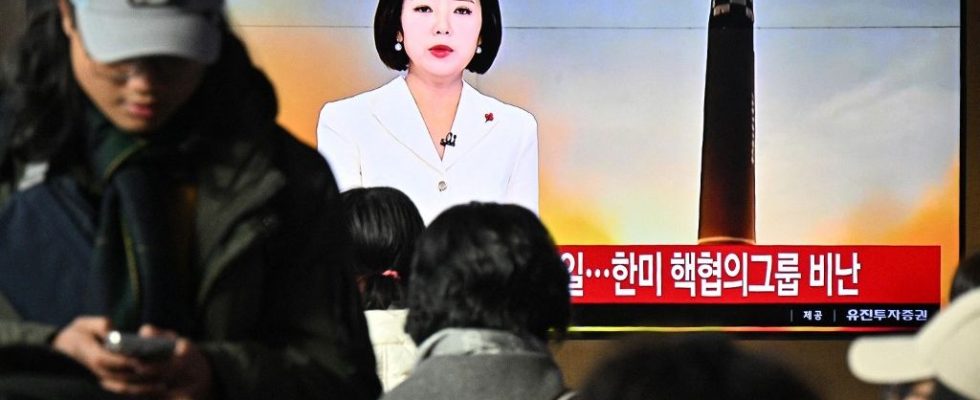North Korea on Monday fired a long-range ballistic missile potentially capable of striking the United States, Seoul and Tokyo announced, just hours after another late-night launch of a short-range missile. These two consecutive launches come a few days after warnings from Seoul and Washington which warned Pyongyang that “any nuclear attack” against the United States or its allies would bring about the end of the regime of Kim Jong Un, the North Korean leader.
The South Korean army announced that it had detected the launch of a long-range ballistic missile launched Monday from the Pyongyang region, estimating that it had traveled 1,000 km before crashing into the Sea of Japan. Japan said it was probably an ICBM-class missile. This type of projectile “could have the capacity to fly more than 15,000 km, and in this case the entire territory of the United States would be within its range,” according to Deputy Parliamentary Minister of Defense Shingo Miyake.
Its flight lasted 1 hour 13 minutes, reaching a maximum altitude of more than 6,000 km. And around 9:37 a.m. – Japanese time – the missile fell into the sea outside Japan’s exclusive economic zone (EEZ), 250 km northwest of the small island of Okushiri which neighbors that of Hokkaido ( north of the country), said Shingo Miyake.
Convictions from Washington and Tokyo
Japan and the United States condemned the shooting. “These launches, like other ballistic missile launches by Pyongyang this year, constitute a violation of several United Nations Security Council resolutions,” the spokesperson for the US State Department said in a statement to the AFP.
“We strongly condemn” these shots, declared Japanese Prime Minister Fumio Kishida, saying that they represented a “threat to peace and stability in the region”.
North Korea has already carried out four ICBM tests this year, the last of which, a Hwasong-18, dates back to July. This solid fuel missile, already tested last April, has the particularity of being easier to transport and faster to launch than liquid fuel versions. South Korea’s Joint Chiefs of Staff spokesman said it was analyzing whether Monday’s launch was a solid-fuel ICBM.
The United States and South Korea participated in the second session of the Nuclear Advisory Group in Washington on Friday, focusing on nuclear deterrence in the event of conflict with the North. It was on this occasion that the White House warned that any nuclear attack by Pyongyang would put an end to the regime.
Preventive and lethal response
On Sunday, a spokesperson for the North Korean Defense Ministry denounced a plan by the allies to add a nuclear exercise next year to their annual joint military exercises, threatening a “preventive and deadly counterattack” .
“This is an open statement on nuclear confrontation aimed at making the use of nuclear weapons against the DPRK a fait accompli,” the ministry said in a statement carried by the official North Korean News Agency. Korean KCNA. “Any attempt to use armed forces against the DPRK will be met with a preemptive and deadly response,” the statement added, referring to the Democratic People’s Republic of Korea, North Korea’s official name.
Sunday’s short-range missile launch came as Pyongyang marked the death anniversary of leader Kim Jong Un’s father and predecessor, Kim Jong Il, who died on Dec. 17, 2011. North Korea declared last year an “irreversible” nuclear power and has repeatedly declared that it will never abandon its nuclear program, which the regime considers essential to its survival.
Last month, North Korea succeeded in placing its first spy satellite “Malligyong-1” into orbit, after two failures in May and August. The West, Japan and South Korea denounced this launch, as did UN Secretary General Antonio Guterres, judging that the use of ballistic missile technologies violated UN Security Council resolutions.

